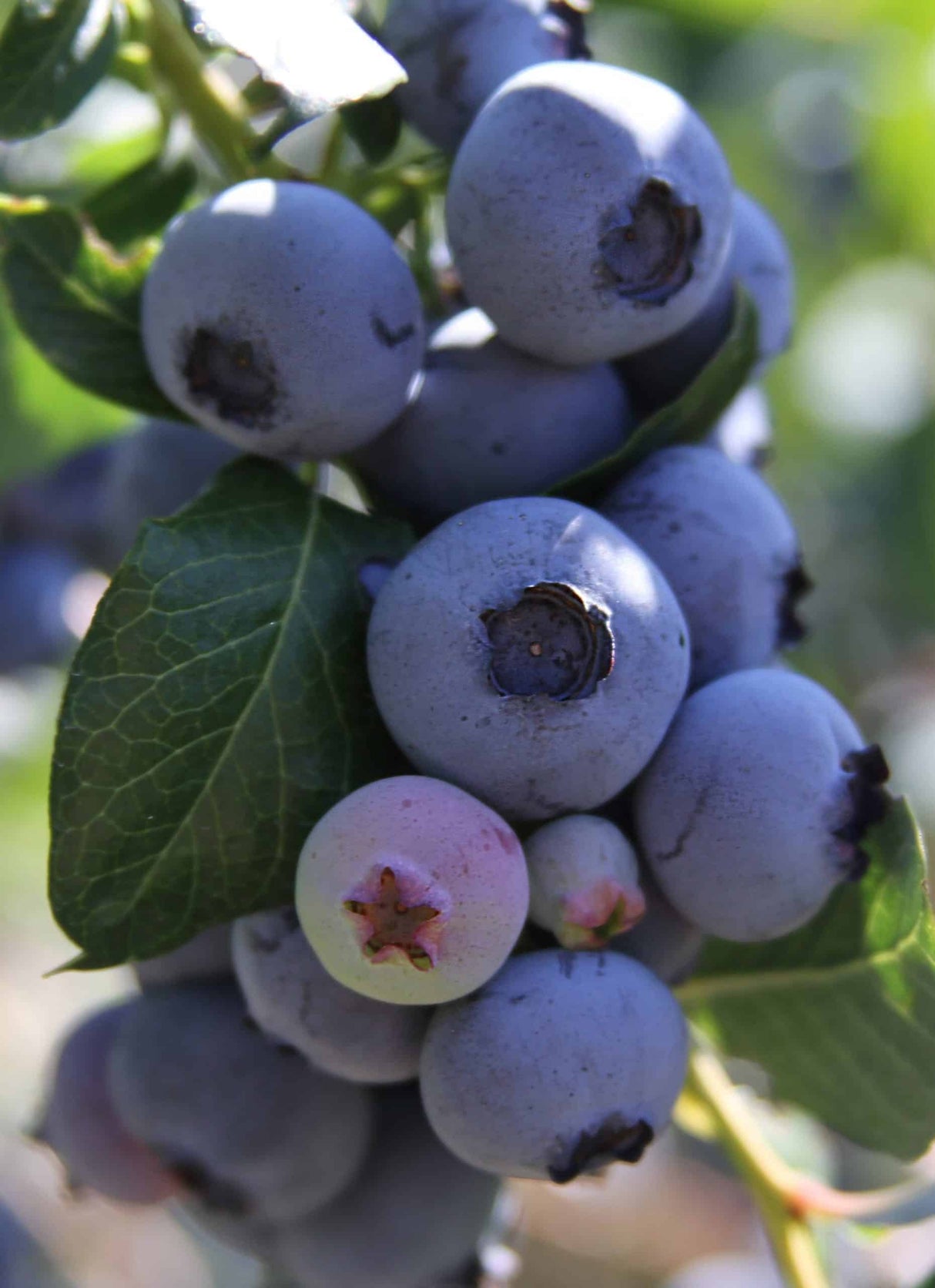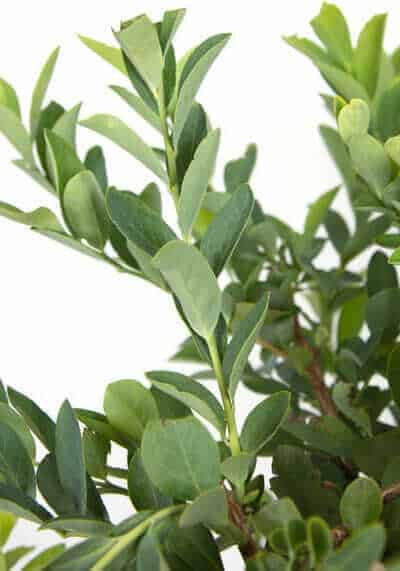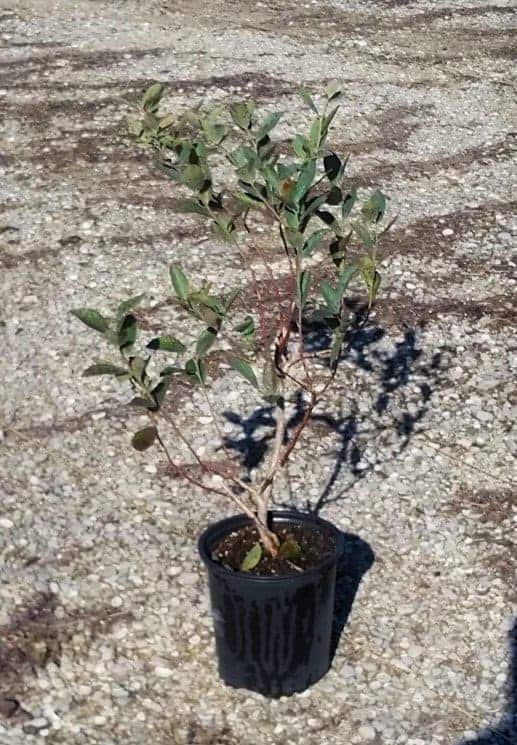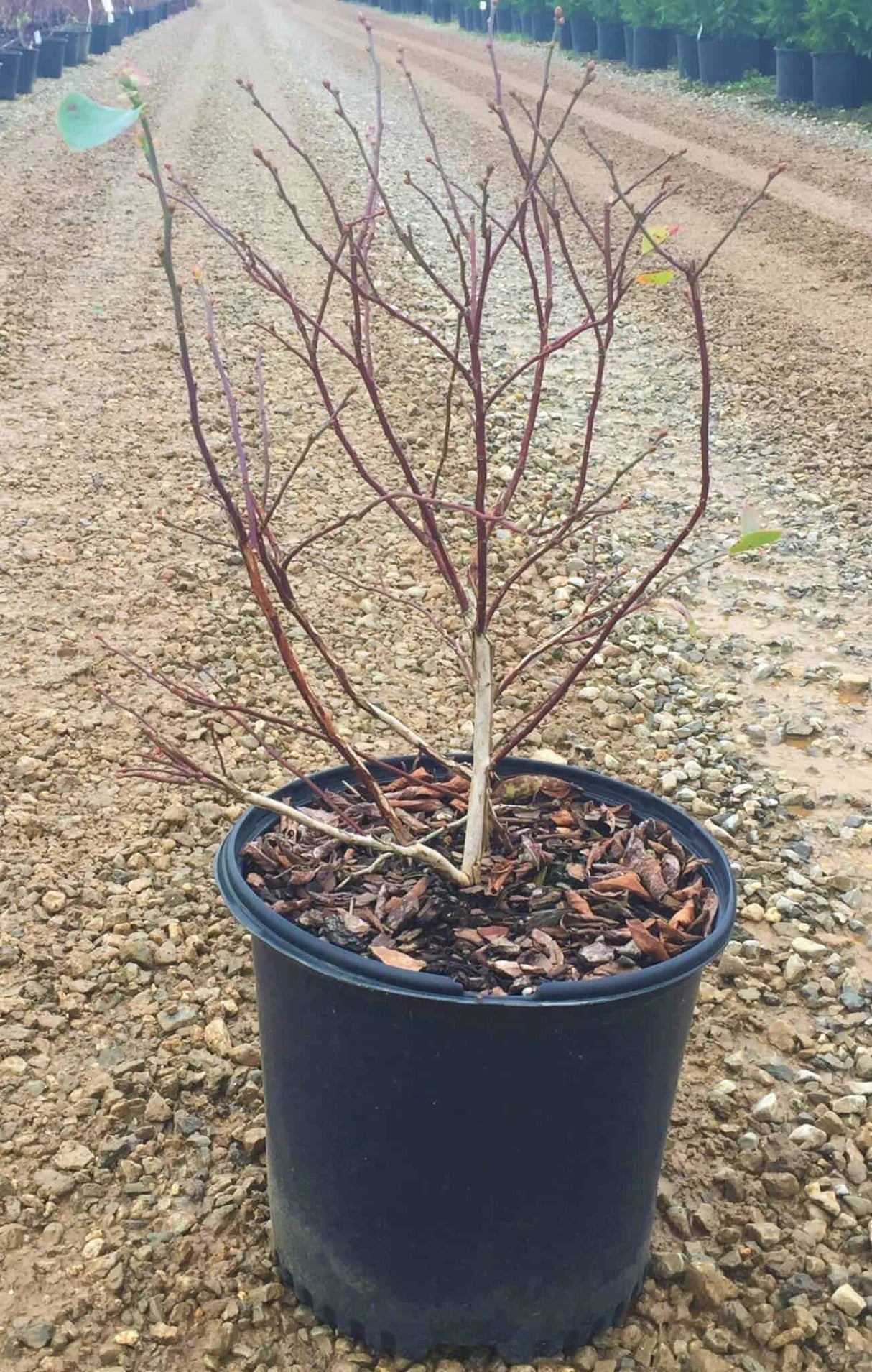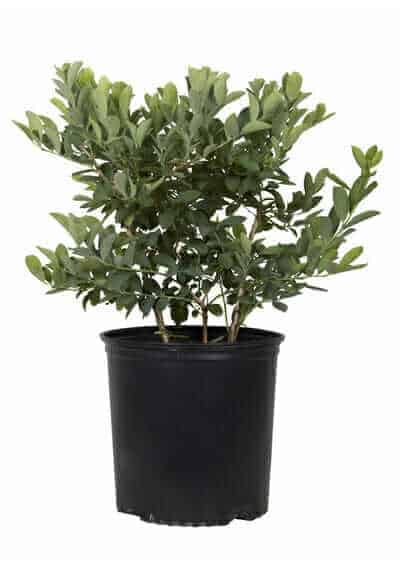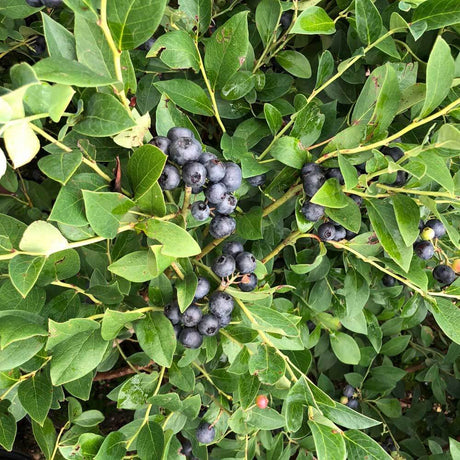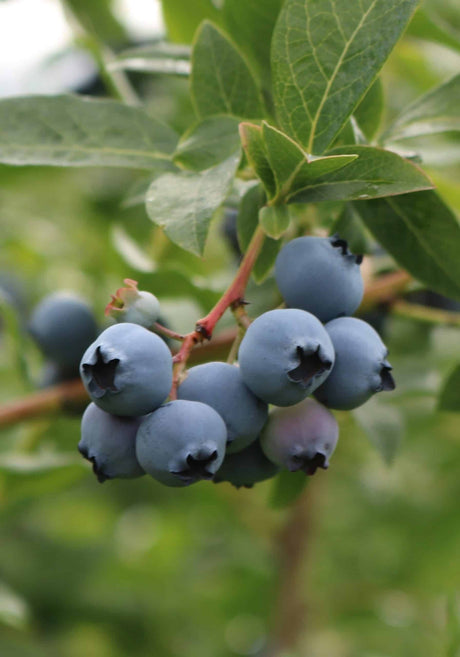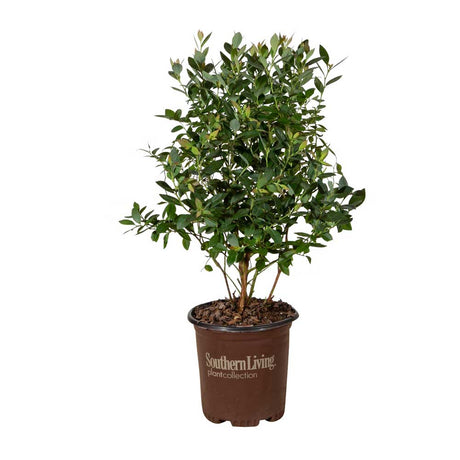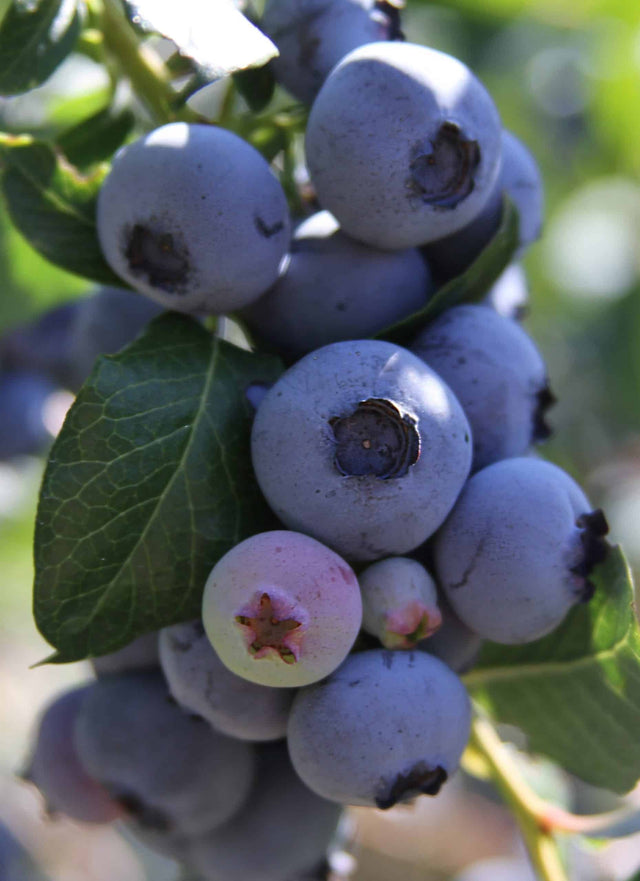Woodard Rabbiteye Blueberry
Woodard Rabbiteye Blueberry - 2.5 Quart is backordered and will ship as soon as it is back in stock.
Couldn't load pickup availability
Description
Description
The Woodard Rabbiteye Blueberry is one of the oldest Rabbiteye varieties around, and it's still one of the best! It's is one of the earliest fruiting blueberries around, as it only requires 350 Chill Hours (Chill Hours are the number of hours under 45 degrees that a plant needs to produce fruit).
White bell-shaped blooms cover these blueberry plants in early spring. Then, medium to large dark blue blueberries mature in late spring to early summer. This fruit is rich in antioxidants and very tasty. You can feel good about feeding your family healthy fruit every year grown in your very own garden!
The foliage is bluish-green in hue and lightly glossy. Before losing its leaves in winter, its foliage takes on an orange-red hue in fall.
This selection is naturally heat-tolerant which makes it well suited for growing in the southern United States.
Reaches a mature size of 5-6' W x 5-6' H.
We do not guarantee that they will be fruiting or flowering on arrival. Our priority is providing quality landscape plants that are ready to perform beautifully over time.
*The Woodard Rabbiteye Blueberry is a deciduous/semi-evergreen plant and will go dormant during the winter months. When this plant is ordered during the Fall/Winter expect seasonal foliage decline(discoloration, spots, leaf drop) or the plant to arrive completely dormant.*
Woodard Rabbiteye Blueberry Care
It's hardy from USDA Zones 8-10. This is a deciduous variety that will lose its leaves yearly in late fall to early winter. New leaves will emerge in spring.
Grows best with Full Sun exposure.
Water 2-3 times per week for the first growing season. After the first growing season, provide supplementary water in times of extended drought and/or heat.
Plant in slightly acidic soil with good drainage for best results. Alkaline soil may lead your plant to struggle over time. Rabbiteye Blueberries require slightly acidic soil to thrive. Consequently, the Woodard Blueberry won't do well in alkaline soil. Test your soil with our soil test kit to ensure your pH is where it needs to be. If your soil is too alkaline, you can use Espoma Soil Acidifier to get your pH more acidic. You can also supplement it with elemental sulfur to decrease the pH.
Fertilize in early spring with organic acidic plant fertilizer.
Suggested Cross Pollinators
Planting with other varieties of Rabbiteye Blueberries for cross-pollination vastly increases and improves fruit production. Two reliable pollinators for this selection include the Climax Rabbiteye Blueberry and Premier Rabbiteye Blueberry.
Care & Use
Care & Use
Spacing Recommendations
Spacing Recommendations
-
Scientific Name
-
Hardiness Zone8, 9, 10
-
Sun ExposureFull Sun
-
Evergreen or DeciduousDeciduous
-
FeaturesAttracts Birds / Butterflies, Disease Tolerant, Flowering, Sun Loving
-
Feature ColorBlue, Green
-
UsesContainer, Hedge
-
Water NeedsMedium
-
Bloom SeasonSummer
Growing Zones : 8, 9, and 10

